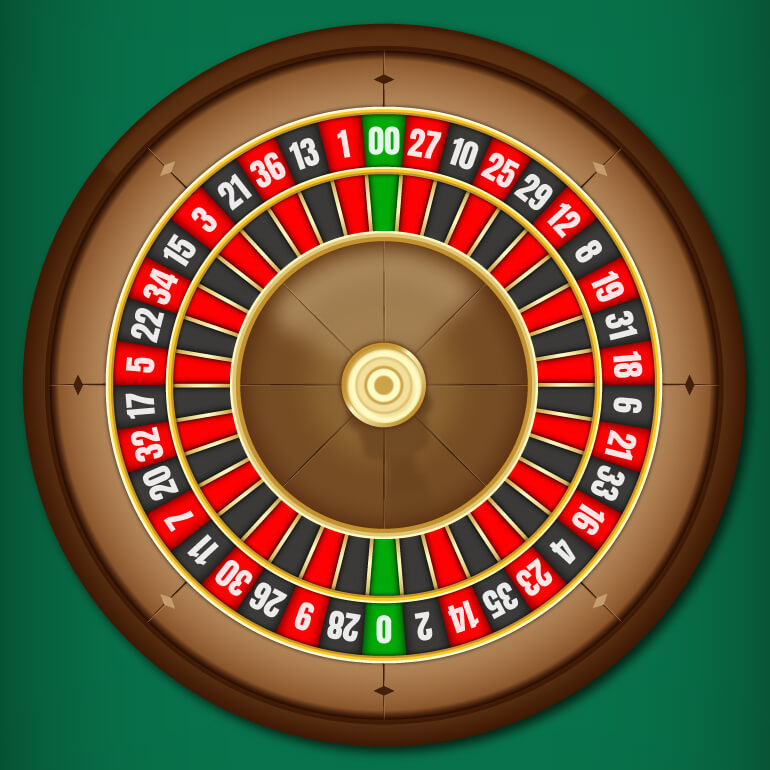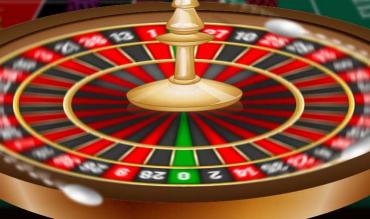Our journey into addressing this topic should first begin with whether biased Roulette wheels are a myth or reality in 2019 and the probability of them being likely or unlikely to exist in the future.
There are wildly reported instances in history where players have taken advantage of casinos that had unknowingly used biased wheels. However, examples of players winning big after having identified imbalanced wheels are rare these days.
This doesn’t mean that biased Roulette wheels don’t exist today. I simply mean that casinos have upped their game, moreover since the turn of the 21st Century. They maintain the wheels using technology to avoid biases, metaphorically shouting out, to the savvy Roulette number cruncher, ‘come and make a financial killing.’
I should know for I’ve attempted to capitalise on what I’ve believed had been biased wheels on numerus occasions in the past and have had mixed results.

So, it’s clear that biased wheels are still a reality, since moreover, logically no one wheel is truly unbiased i.e. perfectly balanced and/or without any flaws. However, identifying a ‘true biased wheel’ and properly being able to take advantage of one is borderline myth these days.
Nevertheless, let’s explore this further. The topic of biased Roulette wheels is vast, so I will condense my professional knowledge and experience of the subject entails in an easy to understand structure which will assist you consider some of the main important and worthwhile factors.
THE WHEELS ARE MAINTAINED
Firstly, most well-known and well-operated land-based and online casinos employ the services of anti-bias roulette wheel maintenance teams. Or in simple terms, they ensure that their wheels are balanced. Sometimes the tech staff are inhouse and attend to slots, card shufflers and other tech issues. The companies that manufacture wheels also provide ongoing, regular onsite engineer maintenance. It’s the same as when you buy a vehicle from a main dealer where you return it every so many miles for a service with the focus on the timing and performance of the engine to ensure it operates as it had been designed to.
In land-based casinos I have witnessed these maintenance teams at work. Essentially their main task is to ensure the wheels are ‘evenly balanced’ so that they can eliminate inaccurate balancing. They get to work at quiet times, generally 6am to 9am. They analyse the data of the computerised software logger that is designed to register every Roulette result. Sophisticated diagnostic reporting can detect for drop zone bias and non-random results too. This is achieved using discreet in-built sensors and these sensors are also maintained.
For a wheel to be considered unbiased, over many thousands of outcomes the stats will show that each individual pocket results with a ball landing in it within a range and that certain numbered pockets or areas of a wheel are not under or over performing too far out of this range to flag up anomalies. An average of six years’ worth of stats can be collected and stored on the software.
LIKELY AND UNLIKELY CAUSES OF BIASED WHEELS
Aside from ensuring that the wheels are evenly weighted from the manufacturing process, and maintaining balance following setup and during ongoing use, this includes the static elements of the: bowl rim, upper and lower ball tracks and deflectors. These can wear out or become damaged in the following ways.
Bowl rim: Players might lean on the bowl rim, though these days casinos prevent this with perspex screens. Yet we often witness dealers leaning on bowl rims. It’s unlikely that a bias will result since the structure of a wheel base is very sturdy. Any imbalance is easily identified and thereafter levelled following any table movement.
Modern wheels use a ball track inclinometer which can detect unlevelled wheels. This is also true of the layout area of the table that the whole wheel is attached to or positioned within at the dealer area end of the table.
Abnormal activity by players at a table can unlevel a wheel, yet this is unlikely to result in a wheel developing a prolonged bias since a relevel of the table and wheel base will rebalance any imbalance. Moreover, in online Roulette where the only players on tables are those placing bets from their phones, tablets, laptops etc, vibrations and movements are limited to dealer interaction on many of the wheels though some casinos do live stream to land-based casinos.
Ball tracks and deflectors: These can, and of course do wear out over time, but we’re talking many years, so that by the time they do, the wheel would have been replaced by any reputable casino. Moreover, even where a 20+ year old wheel -- that has been in almost daily service -- is still being used, the subtle changes in functionally of ball/parts relationship are unlikely to have a bearing on contributing to certain numbered pockets or areas of the wheel hitting more or hitting less enough to constitute a biased wheel.
A ball rattle is when the upper ball track is wearing, and this may lead to certain drop points becoming poplar. However, since this isn’t strictly speaking the moving part of a wheel in and of itself, at whatever point a ball drops, it still must contend with deflectors, the cone and dividers and the back walls of pockets therefore it is at the stage of the fall into the inner wheel that a bias is more likely to reveal itself if at all. And as I wrote, biases in ball drop points can these days be detected by the data logger.
Let’s turn to the wheel moving elements. When a wheel is rotating. The makeup of which includes: the spindle, upper and lower bearings, turret section, cone and wheel head containing the numbered pockets and metal frets (pocket dividers known as the separator ring). There are two main bias possibilities.
1. A bias resulting from mechanical functionality associated with the upper and/or lower bearing/s. A kink causing vibrations, wobbles due to material, production or mounting faults or age-related wear and tear or lubricant issues (insufficient, unsuitable or aged) solid or liquid contamination could cause one or more area/s of a wheel to result more often, just enough for a bias Roulette wheel hunter to gain an edge.
Observing a wheel close-up is almost impossible when playing Roulette online as the camera angles shown and length of time you get to analyse live play is limited. Also, the light and reflections mean you don’t get to notice any bearing issues. That said the task is still difficult in land-based casinos. You might notice a slight wobble as a wheel rotates, by focusing on the space between the metal edge of the wheel head and metal edge of the inner rim of the bowl. This gap is very, very narrow, but if you look closely -- since no one wheel is 100% perfect -- you’ll notice what I call, ‘the give’ point i.e. the point at which the wheel head has ‘timed itself into its rotational footprint.’
If you can identify a ‘give point,’ it is likely that the five numbered pockets each side of this point (thus 10 numbers in total) are giving way to gravity by a tiny fraction of a millimetre (or possibly more) and the deepest level only at that point. This means that a ball will in turn be marginally affected in relation to that tiny, tiny fraction since it possesses its own motion, drop/s, knock/s and bounce/s on its journey to settle in one of the pockets.
In short, a narrowly biased wheel will not possess a strong enough influence to have a bearing on where a ball might end up landing. But it’s worth a try since the dividers around this area are likely to be the most damaged elements of the moving area on a wheel. Moreover, it’s possible that the bearing or wheel give point could have found its footprint because of dealer hand contact with the wheel when rotating over many thousands of spins.
If a wheel is badly damaged, then as well as the give area, a dip will develop which overtime can become noticeable. In this instance the numbered pockets that corelate with this dip are well worth betting on. To try and observe a biased Roulette wheel in this respect, don’t focus on the ball, affix your eyes on one point of the inner bowl metal end where the wheel head metal edge rotates very close to it thus forming the tiny gap. And watch out for any noticeable dip movement moreover at the give point. A give and a dip could prove invaluable when you add to these the points I refer to below about the dividers.
If you discover this area you have found a likely biased wheel. To conform your findings, you’d need to obtain the results of many thousands of outcomes and input the data into an excel spreadsheet. The information will inform you if that certain area of the wheel; those numbered pockets are occurring more than other areas of that wheel. (but do the wheel observation first and the data number outcome last)
However, the problem is in spotting a wheel since any such an opportunity is going to be slim since the materials used in manufacturing modern wheels are high quality and the gap is a millimetre or less which gives the illusion that there isn’t a space when not paying attention and can alert a live casino of major bearing failure because a truly damaged bearing will cause the wheel to knock against the inner bowl rim.
2. A bias resulting from the dividers that separate pockets wearing. Aside from the ball forming subtle knocking patterns to the metal frets especially from balls made of harder materials, the most likely cause of a possible bias occurring is because of dealers rotating wheels by pulling or pushing pocket dividers to rotate a wheel clockwise or anticlockwise. The higher the frets, the more likely they will be subjected to wear and damage. And you know, some of the dealers have strong arms!
Goodluck with your search for biased wheels. Just a leaving tip for all you online Roulette players:
If you video record how a ball lands in pockets and in slow motion review these landings you might notice how they seem to avoid certain pockets and areas by bouncing away from dividers and pockets as if rejected. As well as notice how, a ball seems to run into pockets with less of a fuss or pure ease of motion as if welcomed by the dividers. This data can indicate a wheel divider bias. In my view the divider bias is a step towards cracking the opportunity of winning on a biased wheel.


